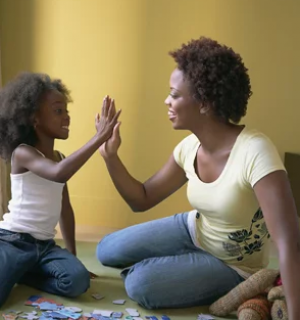Keep calm and breathe

A few weeks ago, we covered a topic in class all about how to relax and calm down if you’re feeling worried or anxious.
In all our drama, dance and singing classes, we always have a weekly focus which helps to develop children’s social skills. Topics range from using a clear voice, eye contact to making decisions. We get a huge amount of positive parent feedback telling us how their children enjoy exploring these various topics and how they shared what they learnt with their parents after the class. But most importantly, they tell us how it has helped their children in their daily life.
Because we had such an overwhelming response about our Relaxing and Being Calm week from parents, I thought I’d share a little of what we covered in class.
I decided to cover this topic a few years ago, after personal experiences at home with my then 4-year-old daughter. She was getting into a state (normally about small things) and couldn’t calm herself down. We tried lots of different techniques before we discovered what worked and I thought it would be a useful exercise for our classes as so many parents spoke of similar experiences.
So how do you cover this topic with children as young as four years old? We do it through improvisation and acting out a situation. In our Mermaids and Pirates story we meet a Pirate who keeps getting very upset and stressed about different things. One by one, all his friends share with him different ways to feel better. This means that we’re not telling the children what to do. Instead, we're simply giving them positive examples through the characters that they can learn from.
I think it’s so important to point out to children that it’s perfectly normal to get worried and anxious about situations. It’s a part of life and we have a whole host of emotions inside us that come out at different times. Just as we are often happy, we are sometimes sad or even scared at times too. If we establish that these changing emotions are nothing to worry about then it’s easier to understand that sometimes we will feel upset. Having said that, there are ways to help and that’s why we look at different techniques.
Here are a few suggestions you might want to try at home with your child:
- Picturing a place where you feel relaxed and happy - This didn’t work first time with my daughter but it did after trying it a few times and I sometimes use it now. We used a sandy beach and I’d tell her a story about walking along it and our feet sinking in. It gradually relaxed her; reminding her of a happy place really helped.
- Counting down from 10-1 – You start off by establishing that 10 is the height of the worry, but that you’re going to count to 1 and by the time that you get to 1 the worry is going to get smaller. You need your voice to change as you count down too so that it ends with being very calm and relaxed. (This technique is also good for regulating tantrums!)
- Breathing deeply and slowly – We all know that deep breathing can be effective. With young children you can use a pot of bubbles and ask them to blow slow bubbles out and watch them fall – it is really relaxing to do and definitely works.
- Tensing and then relaxing your body – My mum used to do this to help me sleep but it’s good for if you’re feeling worried too. Ask your child to lie down and working from the feet up ask them to tense a part of the body for a few seconds and then to relax.
- Singing loudly – If you’re feeling worried a quick blast of your favourite song DEFINITELY works. It fills your lungs with air and lets off happy endorphins.
- “A problem shared is a problem halved” – It’s an age-old saying but it definitely works. I know some parents who have a worry pot where their child can write down the worry too, if they don't feel confident enough to voice it themselves.
It was inspiring to hear the children sharing their own ways to relax and calm down. I'd love to learn more about what you do at home to calm your own children.










 Recent Posts
Recent Posts Recent Comments
Recent Comments
 Archives
Archives

Leave a comment